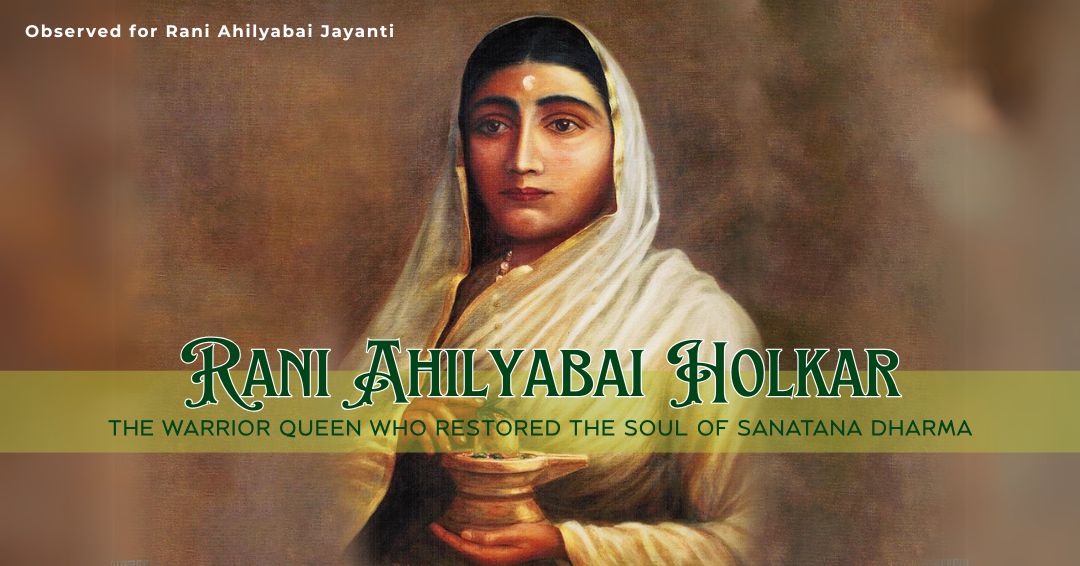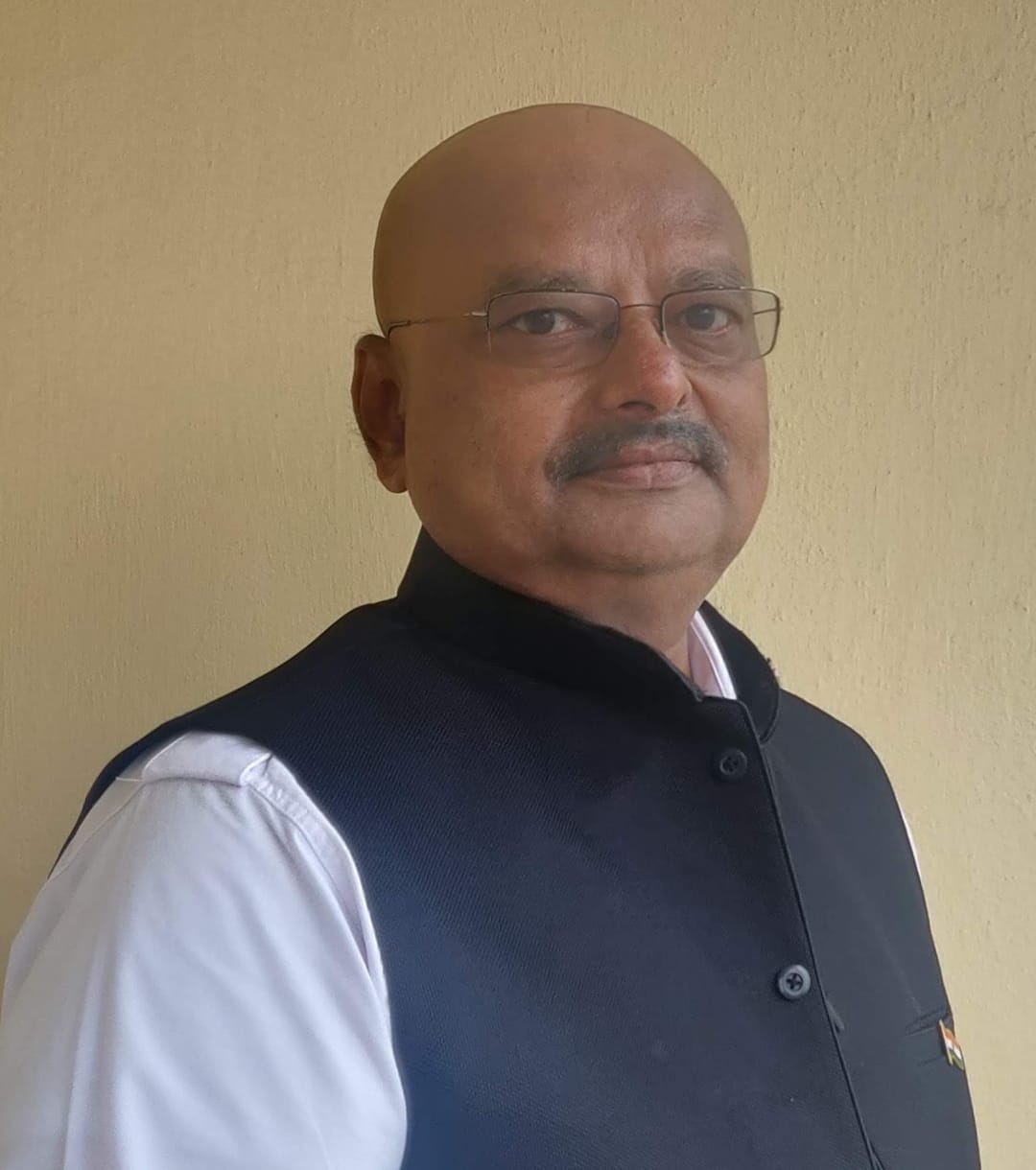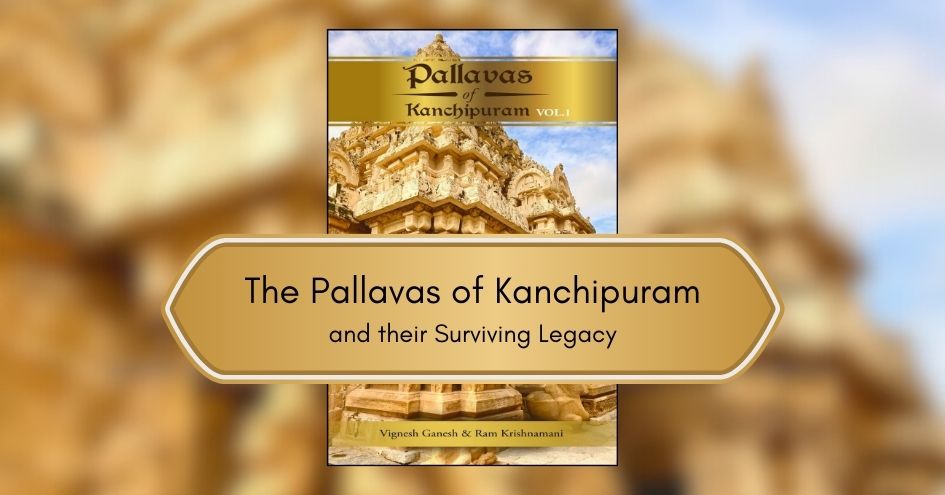
31 May is celebrated as Rani Ahilyabai Jayanti, it is the Day to remember her great contributions to reviving Sanatana Dharma.
In the annals of Indian history, few rulers shine with the radiant glow of righteousness, vision, and tireless devotion like Rani Ahilyabai Holkar of Malwa. Born in 1725 in the humble village of Chaundi (present-day Maharashtra), Ahilyabai rose to prominence not by conquest or birthright alone, but through her dharma, her bhakti, and her unwavering commitment to Bharatiya civilisation. When the Mughal empire's shadow loomed large over the Indian subcontinent, countless temples were desecrated, plundered, and razed, not merely as acts of war, but as a calculated assault on the spiritual and cultural lifeblood of Sanatana Dharma. Many rulers resisted, but few undertook the monumental task of resurrection like Ahilyabai did.
The Queen of Restoration
After the death of her husband and son, Ahilyabai was urged to ascend the throne in 1767. What followed was a golden reign of 28 years, not only marked by administrative excellence and justice but by a pan-Indian campaign of dharmic revival. Ahilyabai personally funded, supervised, and patronized the rebuilding of temples destroyed during the Islamic invasions and the Mughal era. From the Himalayas to the coasts, from the ghats of Varanasi to the banks of the Narmada, she revived sacred spaces, rekindled the Vedic flame, and breathed life back into the spiritual arteries of Bharat.

Some of Her Most Notable Temple Restorations
One of the most iconic acts of Rani Ahilyabai’s spiritual mission was the reconstruction of the Kashi Vishwanath Temple, which had been destroyed by Aurangzeb. She defied the climate of fear and political suppression and rebuilt the temple adjacent to the mosque built by the Mughals, ensuring that the jyotirlinga of Mahadev would once again be worshipped in grandeur.
The ancient Somnath Jyotirlinga, which had faced multiple invasions from Ghazni to Aurangzeb, was another sacred site whose revival Ahilyabai supported. Though reconstruction was completed later, her contributions laid the groundwork and symbolized the undying spirit of Sanatana Dharma.
Even in the far south, Ahilyabai’s devotion knew no bounds. She contributed to the restoration of parts of the Ramanathaswamy Temple, making her legacy pan-Indian.
In the Himalayas, she provided generous endowments and repairs for the temples of Kedarnath and Badrinath, ensuring that the sacred pilgrimage circuits remained accessible and functional for the devotees.
In her own Malwa region, she greatly enhanced and restored the Mahakaleshwar Jyotirlinga Temple, making it a grand center of devotion and Vedic learning.
Across India, Ahilyabai built ghats, wells, water tanks, dharmashalas (pilgrim rest-houses) and education centers—all free and open to pilgrims, saints, and seekers. Her works can still be seen in Haridwar, Gaya, Ayodhya, Mathura, Nashik, and Dwarka.
A Devotee and a Dharma-Rakshak
What made Ahilyabai unique was not merely the scale of her projects, but her motivation: she wasn’t rebuilding structures—she was reviving a wounded civilisation, restoring its dignity, and defying centuries of oppression through acts of divine reconstruction. While others saw ruins, she saw resurrection. She was not driven by politics, but by Sanatana Dharma itself—timeless, cosmic, and sacred. In an age when the imperial courts of Delhi often sought to erase native traditions, here was a woman monarch, clad in white, wielding the power of her pen and purse, commanding not armies, but artisans, priests, and architects—to restore India’s temples to their former glory.
Her Governance: Dharma in Action
Ahilyabai’s reign was not merely about temples. She governed with justice, frugality, and compassion, earning the love of her subjects. She never built a palace for herself, choosing to live in simplicity. Her court was open to sages and scholars of all sects. She maintained law and order, resolved disputes personally, and enforced rules protecting women, animals, and the environment—truly embodying Rajadharma.
Legacy
When Ahilyabai Holkar passed away in 1795, her reputation had transcended kingdoms and dynasties. Her statue stands near the Kashi Vishwanath Temple, not merely as a queen, but as a savior of Sanatana Dharma. The poet-historian Mark Twain, while visiting Varanasi, noted the ancient grandeur of the city and the timelessness of its sacred aura—an aura that Rani Ahilyabai helped preserve through her bhakti and brilliance. In the story of India, Ahilyabai Holkar is not merely remembered—she is revered. She represents the eternal truth that even in dark times, one devoted soul, armed with dharma and vision, can rekindle the divine light. She was not just a queen—she was a trustee of Sanatana Dharma, a protector of temples, a builder of hope.
Rani Ahilyabai Holkar — a name inscribed in stone, but forever etched in the soul of Bharat.
 Wing Commander BS Sudarshan is a former Indian Air Force pilot with over 12,000 flying hours. He participated in Operation Pawan and Operation Cactus before he transitioned to civil aviation. A passionate writer, he has authored six books, including "Hasiru Hampe", appreciated by S L Bhyrappa, and the latest "Evergreen Hampi". He is a regular contributor to the Verandah Club.
Wing Commander BS Sudarshan is a former Indian Air Force pilot with over 12,000 flying hours. He participated in Operation Pawan and Operation Cactus before he transitioned to civil aviation. A passionate writer, he has authored six books, including "Hasiru Hampe", appreciated by S L Bhyrappa, and the latest "Evergreen Hampi". He is a regular contributor to the Verandah Club.
PREVIOUS ARTICLE

Shri Ramachandra Prasad's captivating narrative and the hot chai that was served at the right time transported me to ancient Kerala, where the extraor...

Introduction In Bharatvarsha, History is not the account narrated by victors. It is the record left behind by survivors. The study of Indian History...

It is the first-half of the 8th Century C.E. in South India. The Pallava kingdom possesses strength and prosperity with some of the greatest monument...